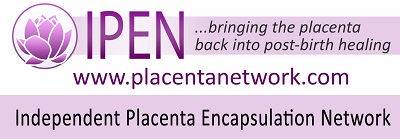Why Eating Your Placenta is Good for You
Why and how thousands of women are consuming their own placentas in the days and weeks after birth.
By Lynnea Shrief, Placenta Specialist.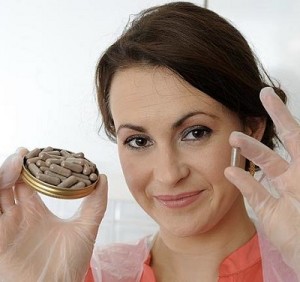
What happens after a baby is born, right after a mother pushes out her baby and cradles him in her arms? In the movies, she kisses her partner and gazes into her baby’s blue eyes. Her little bundle of joy is washed, wrapped carefully in a soft blanket and handed to her to cuddle and kiss. Then, just moments later and quite magically, the new mother is transformed into a fertile sex goddess, hair and make-up done to perfection as she introduces her new addition to her family and friends.
I’m that woman who, during those movie scenes, begins shouting at the television. “What about the placenta?!” What about the most important, sustainable organ on the planet? The organ that supplies all mammals with essential nutrients and gases while in the womb. Why is this powerful, precious and nourishing organ so often and so simply forgotten? Even in many birth education classes the third stage of birth, where the placenta detaches from the uterine wall and through several further contractions must also be birthed by the new mother, is covered in vague detail in less than 5 minutes.
I’m biased and I’m the first to admit that. I’m a placenta specialist (I’ll explain in a moment) and I’ve handled (through vinyl gloves), blended, dehydrated, powdered, encapsulated, printed and prepared hundreds of placentas for new mothers around the world. I find the placenta a fascinating, magical and beautiful organ in all its forms. Yes, I’m different and I won’t take offense if you call me weird. As a placenta specialist my job is to nurture, cradle and respect this forgotten organ and transform it into remedies that over the years I’ve seen benefit so many new mothers after birth.
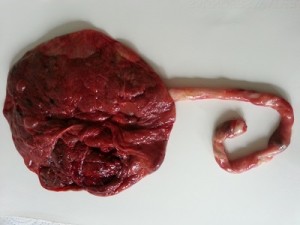
Firstly, before you can appreciate why I do what I do, it’s important that I explain what the placenta is and why it’s so powerful. Theplacenta feeds every growing mammal foetus throughout pregnancy with a unique and still mysterious form of nutrient transfer through small cavities of space between the uterine wall and the maternal side of the placenta. The nutrients, hormones and gases, like oxygen, are absorbed from the mother’s blood by the placenta and are passed to the foetus through the umbilical cord. In return, carbon dioxide, cellular waste and other waste materials are passed back to the mother for filtration through her own filter organs. The placenta does not hold, store or keep waste materials, it transports them.
The placenta is also an endocrine organ and on its own produces many pregnancy and breastfeeding hormones that sustain the pregnancy and prepare the mother for feeding her baby after birth. Full of blood, amino acids (proteins) and minerals, the placenta is a packed full of nourishing goodness that would cost you plenty, should you buy the man-made form separately at your local health food store. But more importantly, these nutrients and hormones are produced by, made for and uniquely designed to suit each individual mother. While it’s not proven, yet, I can hypothesise that the nutrients inside the placenta are far more bioavailable when consumed by the mother compared to store-bought vitamins and minerals, because she is the person who made them.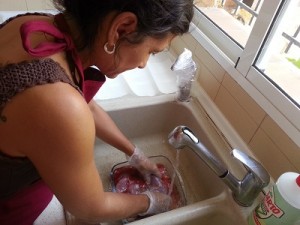
Consumed? Yes, consumed. As in eaten, swallowed or ingested. That is exactly what I’m talking about. As a placenta specialist, I help mothers consume their placenta after birth. I prepare fresh placentas in a clean and hygienic environment into several remedies that are eaten (by that mother only) after birth in order to support them emotionally and physically in the coming weeks.
Why would any mother want to do this you ask?
Well, post-natal depression reportedly affects 1 in 10 women in the UK. England’s breastfeeding rates, while initially high at 84%, drop considerably by 3 months to just 17% and many say the cause is low milk supply. Low iron levels are common after birth and it’s fairly common for new mothers to bleed for 5 weeks or longer after birth, which is a clear sign their body is slow to heal which is one of the direct causes of low iron levels. What if the key to reducing all these ailments has been there all along? I believe the body gives it to us as a gift right after we birth our babies.
Over the last 10 years, growing numbers of women, thousands even, around the world are discovering the benefits of their own placenta. It’sbeen the best kept secret for centuries. Through my work as a placenta specialist, I’ve met many grandmothers in London who, in the 60’s or 70’s, cooked their placenta into a paté and enjoyed it on a piece of toast in the days after birth. I’ve met other mothers that, 15 years ago, fried their placenta in a pan with onions and enjoyed a placenta and onion bap for dinner. Placenta Bolognese was also a favourite.
I consumed my placenta after birth 6 years ago, but in a different way. I drank parts of my placenta in smoothies, blended with fresh organic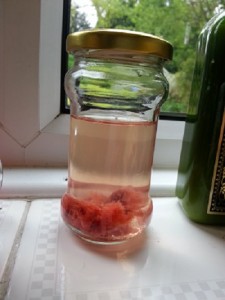 strawberries and banana. I swallowed small pieces of raw placenta daily for 2 weeks and then I cooked, dehydrated and encapsulated the rest, taking 2-3 capsules a day for another 4 weeks. At around 6-8 weeks post-partum I felt balanced enough and began to forget to take my capsules, which was my body’s way of telling me I didn’t need them anymore. I took a few here and there in the following months.
strawberries and banana. I swallowed small pieces of raw placenta daily for 2 weeks and then I cooked, dehydrated and encapsulated the rest, taking 2-3 capsules a day for another 4 weeks. At around 6-8 weeks post-partum I felt balanced enough and began to forget to take my capsules, which was my body’s way of telling me I didn’t need them anymore. I took a few here and there in the following months.
This was my second birth and the difference from the first was astronomical. As with so many others who share their experiences, this time my milk supply was quick and abundant, my energy levels were stable, my moods were predictable and my iron levels were higher than during pregnancy. I bled very little, felt ‘on top of my game’ despite very little sleep and I even started a new successful business before my son was 6 months old. And my skin and hair…oh, I felt like a supermodel! Beyoncé and Jennifer Lopez don’t smother their faces in expensive deer placenta face cream for no reason.
My first post-birth experience wasn’t horrific or disastrous. It was difficult however and certainly more difficult and exhausting than I had anticipated. I did bleed for 4 weeks, I did struggle with my milk supply and despite exclusively breastfeeding for 9 months, my breasts were never very full. My hair fell out in clumps around 4 months post-partum, my nails were brittle and my skin was dry. I expected more and wanted more from my post-natal experience.
By sharing my story with midwives and doulas around the country I discovered that many more women were searching for that ‘somethingmore’ ... and the placenta seemed to be the key. I continued my research and by 2010 I was, and still am, running the Independent Placenta Remedies Network and website that helps women find locally trained and certified placenta specialists to help them prepare their placenta safely for consumption after birth.
For an organ that has been ignored, pushed aside, labeled ‘hazardous waste’ and almost entirely forgotten for so many years, I feel the new rise in the use of placenta remedies are not only re-establishing the third stage of birth as a recognised part of the birth process, but also restoring women’s faith in themselves and their own capabilities after birth. Will we see a placenta attached to a newborn baby in the next blockbuster movie? Probably not! But the post-natal phase can be an empowering experience and I hope placenta remedies will continue to provide many more new mothers with the emotional and physical support they need to fulfill their own expectations of themselves after birth.
About the author:  Lynnea Shrief is devoted wife and mother of 2 who recently moved from Hertfordshire to Alicante, Spain to follow her husband’s dream to expand his business abroad. She runs the IPEN Placenta Network based in the UK and facilitates placenta remedy specialist training around the world. Lynnea is also a birth doula and pregnancy and labour massage therapist and lecturer. www.placentanetwork.com
Lynnea Shrief is devoted wife and mother of 2 who recently moved from Hertfordshire to Alicante, Spain to follow her husband’s dream to expand his business abroad. She runs the IPEN Placenta Network based in the UK and facilitates placenta remedy specialist training around the world. Lynnea is also a birth doula and pregnancy and labour massage therapist and lecturer. www.placentanetwork.com

